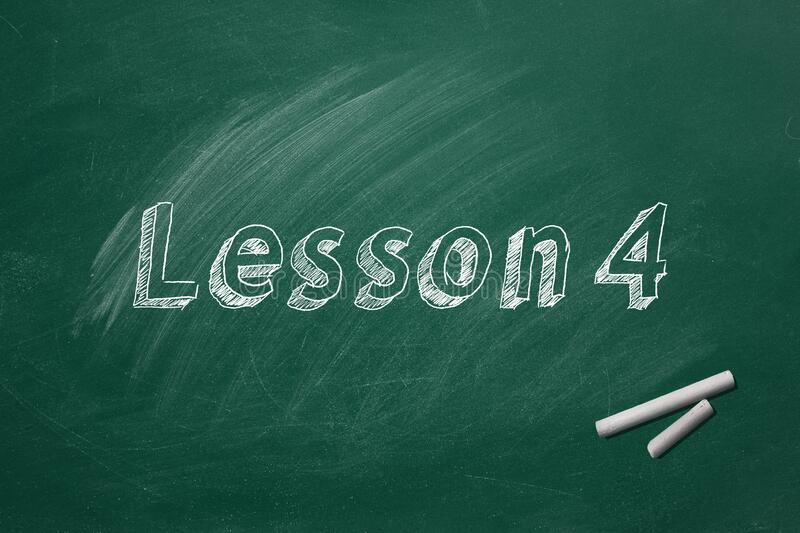
Lesson 4
Contents
One of the most complex concepts in music theory is musical polyphony. However, this is also one of the most important categories, without which it is impossible to understand orchestral music, or to sing a beautiful duet of a complex melody with full-fledged musical accompaniment, or even to record and mix a simple track, where, in addition to voice, guitar, bass and drums sound.
So let’s get started.
The action plan is clear, so let’s get to work!
The concept of polyphony
The term “polyphony” derived from the Latin polyphonia, where poly means “many” and phonia translates as “sound”. Polyphony means the principle of adding sounds (voices and melodies) on the basis of functional equality.
This is the so-called polyphony, i.e. simultaneous sounding of two or more melodies and/or voices. Polyphony implies the harmonic fusion of several independent voices and / or melodies into a single piece of music.
In addition, the discipline of the same name “Polyphony” is taught in musical educational institutions at the faculties and departments of composer’s art and musicology.
The foreign term polyphonia in Russian has not undergone significant transformations, except for writing in Cyrillic instead of Latin. And, it would seem, obeys the rule “as it is heard, so it is written.” The nuance is that this term is heard differently by everyone, and the stresses are also placed differently.
So, in the “Dictionary of the Church Slavonic and Russian Language”, published by the Imperial Academy of Sciences in 1847, it is prescribed to emphasize the second “o” in the word “polyphony” and the second “and” in the word “polyphonic” [Dictionary, V.3, 1847]. Here’s what it looks like page in this edition:

Since the middle of the 20th century and to this day, two variants of stress peacefully coexist in the Russian language: on the last “o” and on the second letter “i”. So, in the “Great Soviet Encyclopedia” it is proposed to put emphasis on the last “o” [V. Fraenov, 2004]. Here screenshot of the TSB page:

In the Explanatory Dictionary, edited by linguist Sergei Kuznetsov, in the word “polyphony” the second letter “i” is substressed [S. Kuznetsov, 2000]. In the word “polyphonic” the emphasis is on the letter “and”, as in earlier editions:

Note that Google Translate supports the latter option, and if you enter the word “polyphony” in the translation column and click the speaker icon, you will clearly hear the accent on the last letter “and”. speaker icon circled in red in the picture:
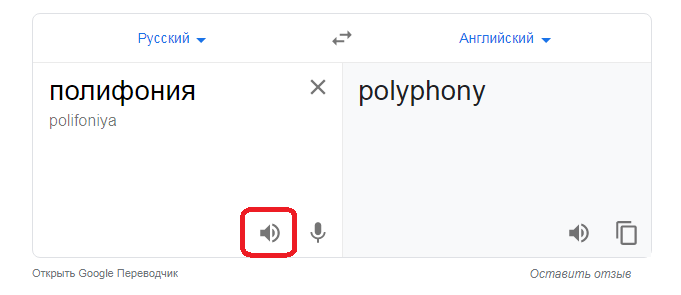
Now that we have understood, in general, what polyphony is and how to pronounce this word correctly, we can delve into the topic.
Origin and development of polyphony
Polyphony is a rather complex phenomenon in music, and it has its own characteristics in different cultures. So, in the countries of the East, polyphony initially had a predominantly instrumental basis. In other words, multi-stringed musical instruments, string ensembles, string accompaniment of singing were widespread there. In Western countries, polyphony was more often vocal. It was choral singing, including acapella (without musical accompaniment).
The development of polyphony in the initial stage is usually called the term “heterophony”, i.e. dissonance. So, back in the 7th century, the practice of adding one, two or more voices over the sound of the chorale was adopted, i.e. liturgical singing.
In the era of the Middle Ages and the Renaissance, motet became widespread – many-voiced vocals. It was not a chorale plus a superstructure of voices in its purest form. This was already a more complex vocal work, although the elements of the chorale are very noticeable in it. In general, the motet has become a hybrid musical form that has absorbed the traditions of church and secular singing.
Church singing also progressed technically. So, in the Middle Ages, the so-called Catholic Mass became widespread. It was based on the alternation of solo and choral parts. In general, masses and motets of the 15th-16th centuries used the entire arsenal of polyphony rather actively. The mood was created by increasing and decreasing the density of sound, different combinations of high and low voices, the gradual inclusion of individual voices or groups of voices.
An exclusively secular singing tradition also developed. So, in the 16th century, such a song format as a mandrigal is gaining popularity. This is a two- or three-voice work, as a rule, of a love lyrical content. The beginnings of this song culture appeared as early as the 14th century, but at that time they did not receive much development. Madrigals of the 16th-17th centuries are characterized by a variety of rhythms, freedom of voice leading, the use of modulation (transition to another key at the end of the work).
The term “richecar” comes from the French rechercher, which means “search” (remember the famous Cherchez la femme?) and, in relation to music, can be interpreted in different ways. Initially, the term meant the search for intonation, later – the search and development of motives. The most famous forms of richecar are a piece for clavier, a piece for an instrumental or vocal-instrumental ensemble.
The oldest richecar was found in a collection of plays published in 1540 in Venice. Another 4 pieces for the clavier were found in the collection of works by the composer Girolamo Cavazzoni, published in 1543. The most famous is the 6-voice richecar from Bach’s Musical Offering, written by the great genius as early as the 18th century.
It should be noted that the styles and melody of vocal polyphony were already in those years closely connected with the text. So, for lyrical texts, chants are characteristic, and for short phrases – recitation. In principle, the development of polyphony traditions can be reduced to two polyphonic trends.
Polyphonic trends of the Middle Ages:
| ✔ | Strict letter (strict style) – strict regulation of the principles of melody and voice leading on the basis of diatonic modes. It was used mainly in church music. |
| ✔ | free letter (free style) – a large variability in the principles of constructing melodies and voice leading, the use of major and minor modes. It was used mainly in secular music. |
You learned about frets in the previous lesson, so now you understand what is at stake. This is the most general information about the development of the traditions of polyphony. More details about the history of the formation of polyphony in different cultures and polyphonic trends can be found in the special educational literature on the course “Polyphony” [T. Muller, 1989]. There you can also find sheet music for medieval pieces of music and, if you are interested, learn a few vocal and instrumental parts. By the way, if you don’t know how to sing yet, but would like to learn, you can take the first steps towards vocal mastery by studying our course “Voice and Speech Development”.
Now is the time to move on to the techniques of polyphony in order to understand more clearly how polyphony is formed into a single melody.
Polyphonic techniques
In any polyphony training course, you can find such a term as counterpoint. It comes from the Latin phrase punctum contra punctum, which means “point against point”. Or, in relation to music, “note against note”, “melody against melody”.
This does not change the fact that the term “counterpoint” has several different meanings. And now let’s look at a few basic techniques of polyphony.
Imitation
Imitation is when a second (imitating) voice joins the initial monophonic sound after some time, which repeats the previously sounded passage on the same or a different note. Schematically it looks like in the following way:
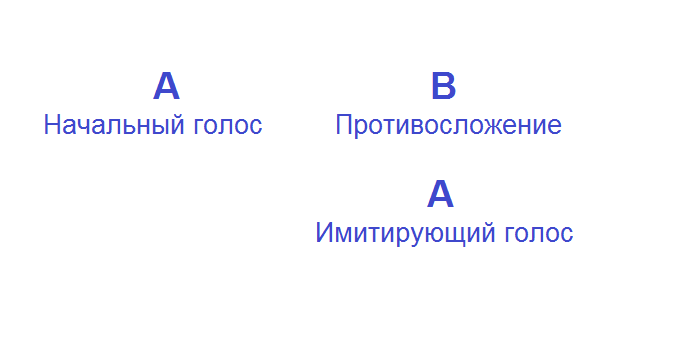
Let us clarify that the term “opposite” used in the diagram is a voice accompanying another voice in a polyphonic melody. Harmonic consonance is achieved using various techniques: additional rhythm, change of melodic pattern, etc.
Canonical imitation
Canonical, it is also continuous imitation – a more complex technique in which not only the previously sounded passage is repeated, but also the counter-addition. That’s how it is looks like a schematic:

The term “links”, which you see on the diagram, just refers to the repeating parts of the canonical imitation. In the illustration above, we see 3 elements of the initial voice, which are repeated by the imitating voice. So there are 3 links.
Final and infinite canon
The finite canon and the infinite canon are varieties of canonical imitation. The infinite canon involves the return of the original material at some point in time. The final canon does not provide for such returns. The figure above shows a variant of the final canon. And now let’s see what does infinite canon look like, and understand the difference:

Let us clarify that the infinite canon of the 1st category means an imitation with 2 links, and the infinite canon of the 2nd category is an imitation with the number of links from 3 or more.
Simple sequence
A simple sequence is the movement of a polyphonic element to a different pitch, while the ratio (interval) between the component parts of the element does not change:
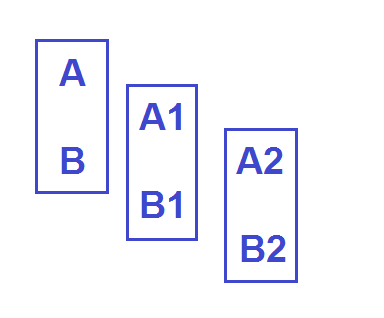
So, in the diagram, the letter “A” conventionally denotes the initial voice, the letter “B” denotes the imitating voice, and the numbers 1 and 2 denote the first and second displacement of the polyphonic element.
Complex counterpoint
Complex counterpoint is a polyphonic technique that combines many polyphonic techniques that allow you to generate new melodies from the original polyphony by either changing the ratio of voices or making changes to the melodies that make up the original polyphony.
Varieties of complex counterpoint:
Depending on the direction of permutation of melodic voices, vertical, horizontal and double (simultaneously vertical and horizontal) movable counterpoints are distinguished.
In fact, difficult counterpoint is only called “complex”. If you work through the material of the next ear training lesson well, you will easily recognize this polyphonic technique by ear.
These are just some of the simplest polyphonic techniques for a beginner musician to understand. You can learn more about these and other polyphonic techniques from the textbook by musicologist, member of the Union of Composers of Russia, corresponding member of the Petrovsky Academy of Sciences and Arts Valentina Osipova “Polyphony. Polyphonic techniques” [V. Osipova, 2006].
After we have studied some of the techniques of polyphony, it will be easier for us to understand the classification of types of polyphony.
Types of polyphony
There are 4 main types of polyphony. Each of the types is based mainly on a certain type of polyphonic techniques. The names of the types of polyphony in most cases speak for themselves.
What are the types of polyphony?
| 1 | Imitation – a type of polyphony in which different voices take turns playing the same melody. Imitation polyphony includes various methods of imitation. |
| 2 | subvocal – a type of polyphony, where the main melody and its variations, the so-called echoes, simultaneously sound. The echoes may have different degrees of expression and independence, but they necessarily obey the general line. |
| 3 | Contrasting (different-dark) – a type of polyphony, where different and very contrasting voices are combined in a common sound. The contrast is emphasized by the difference in rhythms, accents, climaxes, the speed of movement of melody fragments, and in other ways. At the same time, the unity and harmony of the melody are provided by the overall tonality and intonation relationships. |
| 4 | Hidden – a type of polyphony, in which a monophonic melodic line, as it were, breaks up into several other lines, each of which has its own intonational inclinations. |
You can read more about each type of polyphony in the book “Polyphony. Polyphonic techniques” [V. Osipova, 2006], so we leave it to your discretion. We have come close to such an important topic for every musician and composer as mixing music.
Music mixing basics
The concept of “polyphony” is directly related to mixing music and getting a finished audio track. Earlier we learned that polyphony means the principle of adding sounds (voices and melodies) on the basis of functional equality. This is the so-called polyphony, i.e. simultaneous sounding of two or more melodies and/or voices. Polyphony implies the harmonic fusion of several independent voices and / or melodies into a single piece of music.
Strictly speaking, mixing music is the same polyphony, only on a computer, and not on a musical staff. Mixing also involves the interaction of at least two musical lines – vocals and “backing track” or accompaniment of a musical instrument. If there are many instruments, mixing turns into an organization of the interaction of many melodic lines, each of which can be either continuous throughout the entire work, or appear and disappear periodically.
If you go back a little and look again at the schematic representation of polyphonic techniques, you will see a lot in common with the interface of most computer programs designed to work with sound. Just as most polyphonic techniques are depicted according to the “one voice – one track” scheme, sound processing programs have a separate track for each melodic line. This is what the simplest version of mixing two tracks might look like in SoundForge:

Accordingly, if you need to mix, for example, voice, electric guitar, bass guitar, synthesizer and drums, there will be 5 tracks. And if you need to make a studio orchestral recording, there will already be several dozen tracks, one for each instrument.
The process of mixing music is not just following the musical notation and the exact location of the beginning and end of musical lines relative to each other. Although this is not easy, if there are a lot of sixteenth, thirty-second and sixty-fourth notes in the recording, which are more difficult to hit than integers.
Of course, the sound producer must hear and neutralize the inclusions of extraneous sounds that can appear even when recording in a good studio, not to mention recordings made at home or, conversely, during concerts. Although, a live recording can also be of very high quality.
An example is the live album HAARP by the British rock band Muse. The recording was made at Wembley Stadium. Then, with a difference of 1 day, 2 concerts of the group took place: on June 16 and 17. Interestingly, for the audio version on CD, they took the recording of June 16, and for the video version on DVD, they used concert recording, held on June 17, 2007:
In any case, a sound engineer or sound producer will have to work hard to turn even a well-recorded complex polyphony into a full-fledged finished work. This is truly a creative process in which you have to take into account a lot of nuances. But, as we have repeatedly seen, music is described by quite specific countable categories – hertz, decibels, etc. And there are also criteria for high-quality mixing of a track, and both objective technical and subjective artistic concepts are used there.
Criteria for quality audio recording
These criteria were developed by the International Organization for Television and Radio Broadcasting (OIRT), which existed in the second half of the 20th century, and they are known as the OIRT Protocol, and the provisions of the Protocol still take many structures as the basis for assessing the quality of audio recordings. Let us briefly consider what criteria a high-quality recording should meet according to this Protocol.
Overview of the provisions of the OIRT Protocol:
1 | Spatial impression – it is understood that the recording should sound voluminous and natural, the echo should not drown out the sound, reverberation reflections and other special effects should not interfere with the perception of music. |
2 | Transparency – implies the intelligibility of the lyrics of the song and the distinguishability of the sound of each and every instrument participating in the recording. |
3 | Musical balance – a comfortable ratio of the volume of voices and instruments, various parts of the work. |
4 | Timbre – comfortable sounding of the timbre of voices and instruments, naturalness of their combination. |
5 | stereo – implies the symmetry of the position of direct signals and reflections, the uniformity and naturalness of the location of sound sources. |
6 | Quality sound image – absence of defects, non-linear distortions, interferences, extraneous noises. |
7 | Characterization execution – hitting the notes, rhythm, tempo, correct intonation, good ensemble teamwork. Deviation from tempo and rhythm is allowed in order to achieve greater artistic expression. |
8 | Dynamic range – implies the ratio of the useful signal and noise, the ratio of the sound level at the peaks and the quietest sections of the recording, the correspondence of the dynamics to the expected listening conditions. |
Compliance with the criteria of the Protocol is assessed on a 5-point scale. The OIRT Protocol is most closely followed in the evaluation of classical, folk and jazz music. For electronic, pop and rock music, there is no single protocol for assessing sound quality, and the provisions of the OIRT Protocol are more advisory in nature. One way or another, in order to make a high-quality recording, certain technical conditions are needed. Let’s talk about them in more detail.
Technical support
Above, we have already begun to talk about the fact that for a high-quality final result, high-quality source material is important. So, for high-quality recording of jazz, classical and folk music, recording on a stereo pair of microphones is often used, which subsequently does not require mixing. Actually, analog, digital or virtual mixing consoles (they are also mixers) are used for mixing. Sequencers are used for virtual mixing of tracks.
Technical requirements for a computer are usually prescribed by the manufacturers of computer programs for working with sound. Therefore, you can check your device for compliance with the requirements when you decide on the choice of software. To date, there are several popular programs for audio processing and sound mixing.
Sound Forge
First, it is already mentioned above Sound Forge. It is convenient because it has a set of basic sound processing functions, and you can find a free Russian-language version [MoiProgrammy.net, 2020]:
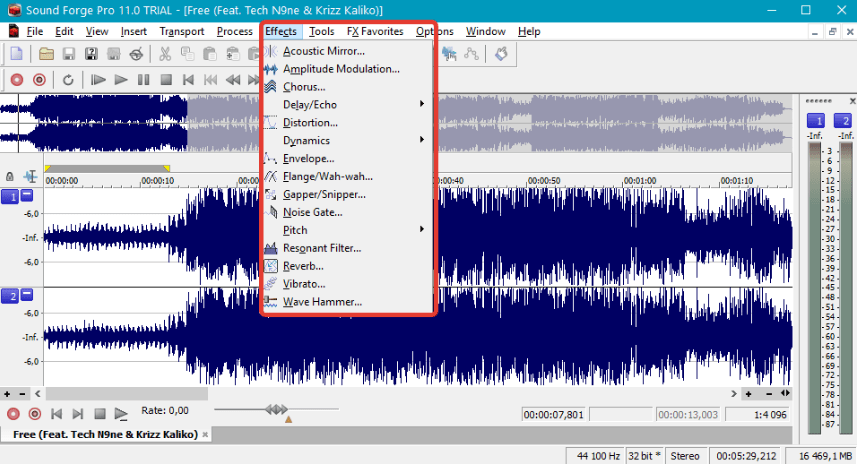

If you need to understand the English version, there is a detailed description [B. Kairov, 2018].
Audacity
Secondly, another convenient and uncomplicated Russian-language program Audacity [Audacity, 2020]:
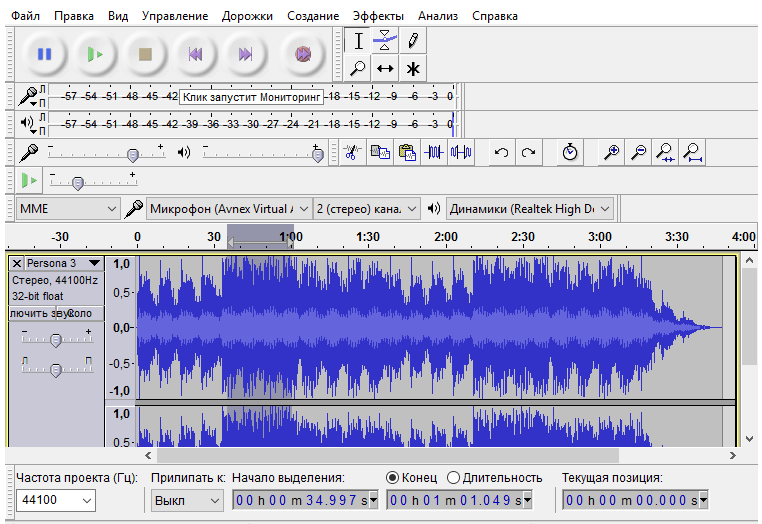

In addition to the free version, you can find a very sensible manual for it [Audacity 2.2.2, 2018].
Dehumaniser 2
Thirdly, it is beloved by the developers of computer games and extreme vocals. Dehumaniser 2. The interface is in English and is noticeably more complicated, but you can figure it out:


And it will not just be mixing, but also opportunities for sound design [Krotos, 2020].
Cubase Elements
Fourth, it is worth paying attention to the program Cubase Elements [Cubase Elements, 2020]. There, in addition to the standard set of functions, there is also a chords panel that will allow you to create a track “from scratch” or “bring to mind” a previously made recording, applying previously learned polyphonic techniques in practice:
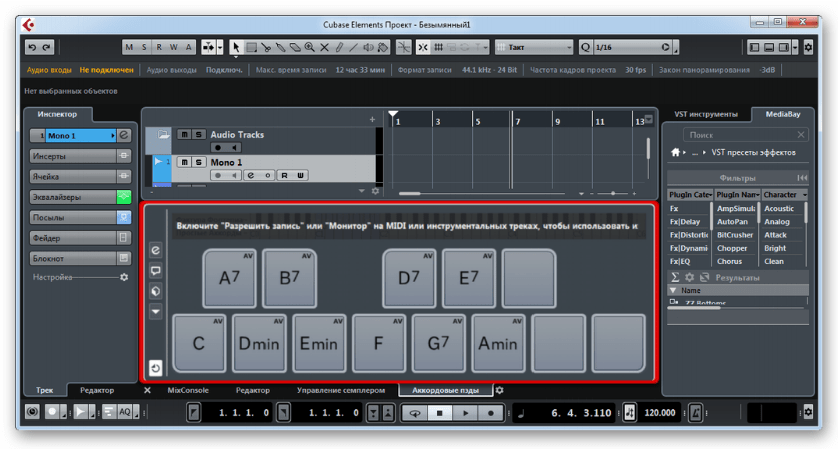

Before you start, study the overview of the functions of the program [A. Olenchikov, 2017].
Effectrix
And finally, this is the effects sequencer Effectrix. To work with it, you need some experience, but it’s worth taking note of this program now, because with regular practice, experience will come very soon [Sugar Bytes, 2020]:
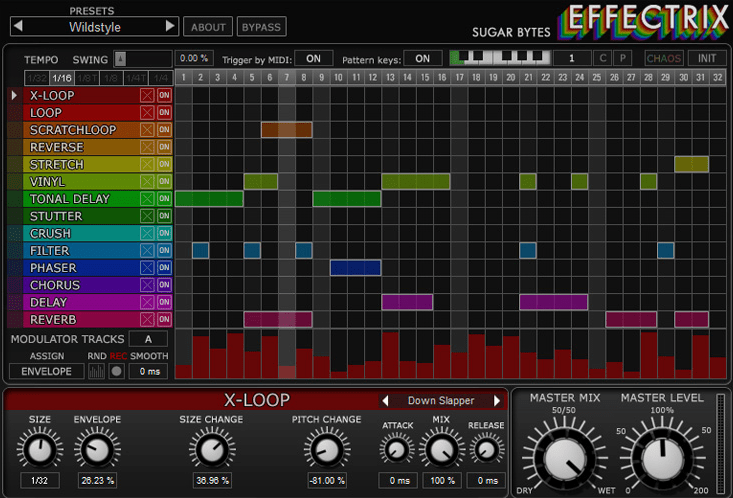

You can learn more from the article “Programs for mixing music and voice”, where a dozen programs are considered, including those for professional musicians and DJs [V. Kairov, 2020]. And now let’s talk about preparing for the mixing of the track.
Mixing preparation and mixing process
The better prepared you are, the faster and better the mix will be. It’s not just about technical support, a comfortable workplace and high-quality lighting. It is important to take into account several organizational issues, as well as the features of the work of the cerebral hemispheres. In general, take note…
How to prepare for the mixing process:
| ✔ | Label all source audio files so it’s clear where everything is. Not just 01, 02, 03 and beyond, but “voice”, “bass”, “drums”, “backing vocals” and so on. |
| ✔ | Put on your headphones and remove the clicks manually or with sound cleaning software. Even if you use programs, check the result by ear. This routine work should be done before the start of the creative process. different hemispheres of the brain are responsible for creativity and rationality, and constant switching between processes will reduce the quality of both. You can choose a program in the review “Top 7 best plug-ins and programs for cleaning sound from noise” [Arefyevstudio, 2018]. |
| ✔ | Balance the volume by listening to the recording in mono first. This will allow you to quickly identify the volume imbalance in the sound of different musical instruments and voices. |
| ✔ | Adjust all equalizers to improve the frequency balance. Remember that the equalizer setting affects the volume performance. Therefore, after tuning, check the volume balance again. |
Start the mixing process with drums, because they occupy a significant part of the frequency range from low (bass drum) to high frequencies (cymbals). Only after that move on to other instruments and vocals. After mixing the main instruments, add, if planned, special effects (echo, distortion, modulation, compression, etc.).
Next, you need to form a stereo image, i.e. arrange all the sounds in the stereo field. After that, adjust the arrangement, if necessary, and start working on the depth of the sound. To do this, add delays and reverb to the sounds, but not too much, otherwise it will “press on the ears” of the listeners.
When finished, check the volume, EQ, effects settings again and adjust if necessary. Test the finished track in the studio, and then on different devices: run the audio file on your smartphone, tablet, listen to it in your car. If everywhere the sound is perceived normally, then everything is done correctly!
If you come across a lot of unfamiliar words, read the book “Computer Sound Processing” [A. Zagumennov, 2011]. Don’t be embarrassed by the fact that much is considered on the example of old versions of computer programs. The laws of physics have not changed since then. Those who have already tried their hand at working with sound mixing programs can be recommended to read about “Mistakes when mixing music”, which at the same time gives recommendations on how to avoid them [I. Evsyukov, 2018].
If you find it easier to perceive a live explanation, you can see training video on this topic:


Watch this video on YouTube
During the mixing process, it is recommended to take short breaks every 45 minutes. This is useful not only for your health, but also for restoring the objectivity of auditory perception. Musical ear is very important for high-quality mixing. Our entire next lesson is devoted to the development of ear for music, but for now we offer you to pass a test for mastering the material of this lesson.
Lesson comprehension test
If you want to test your knowledge on the topic of this lesson, you can take a short test consisting of several questions. Only 1 option can be correct for each question. After you select one of the options, the system automatically moves on to the next question. The points you receive are affected by the correctness of your answers and the time spent on passing. Please note that the questions are different each time, and the options are shuffled.
And now we turn to the development of musical ear.





